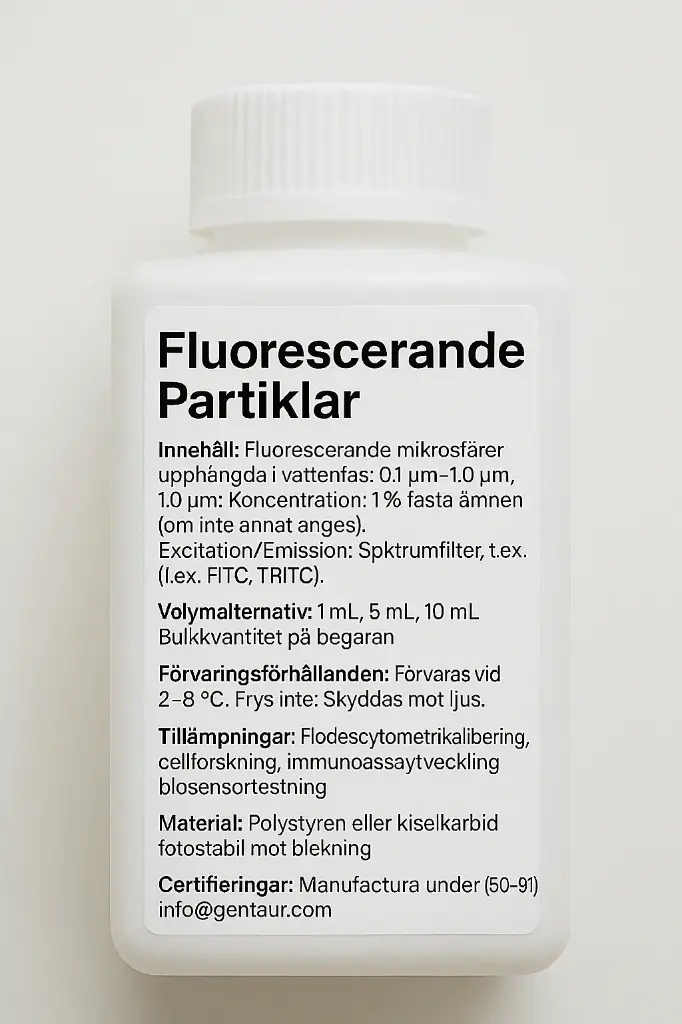Carboxyl Fluorescent Particles – Sky Blue
Carboxyl Fluorescent Particles, Sky Blue, are monodisperse polymer microspheres functionalized with terminal carboxyl (-COOH) groups to enable covalent bioconjugation via carbodiimide chemistry (e.g., EDC/NHS activation). These particles are composed of crosslinked polystyrene or polystyrene-divinylbenzene copolymer matrices, embedded with a sky blue-emitting fluorescent dye exhibiting excitation/emission maxima typically around 405/450 nm. The fluorophore is stably encapsulated within the polymer matrix to prevent photobleaching and leaching under standard experimental conditions.
The carboxylated surface chemistry allows for site-specific conjugation of primary amine-containing biomolecules, including antibodies, oligonucleotides, or peptides, while maintaining colloidal stability in aqueous buffers. The particles are manufactured to high uniformity in diameter, typically ranging from 200 nm to 10 µm, with coefficients of variation (CV) below 5%. Surface charge density is precisely controlled to ensure consistent zeta potential, promoting dispersion stability and minimizing non-specific interactions.
These fluorescent microspheres are optimized for use in flow cytometry, fluorescence microscopy, multiplex bead-based assays (e.g., Luminex/xMAP platforms), and microfluidic sorting applications. The sky blue emission provides spectral separation from common fluorophores such as FITC, PE, or APC, facilitating multiplex detection schemes. Supplied in phosphate-buffered saline (PBS) containing surfactant and sodium azide as preservative.
